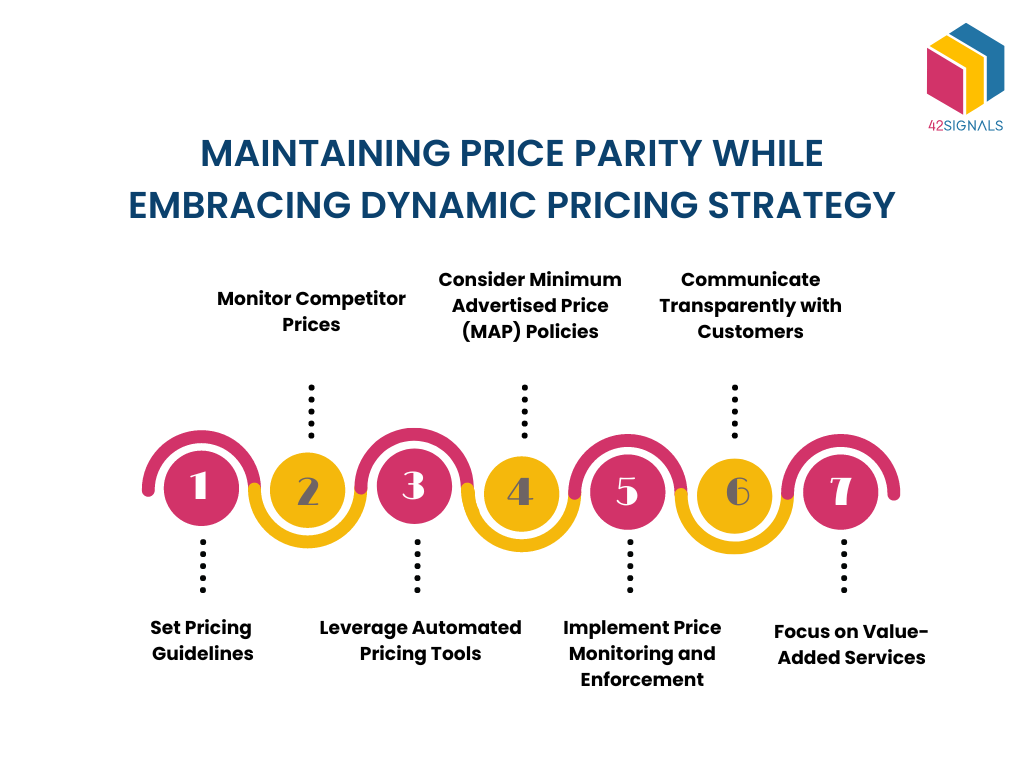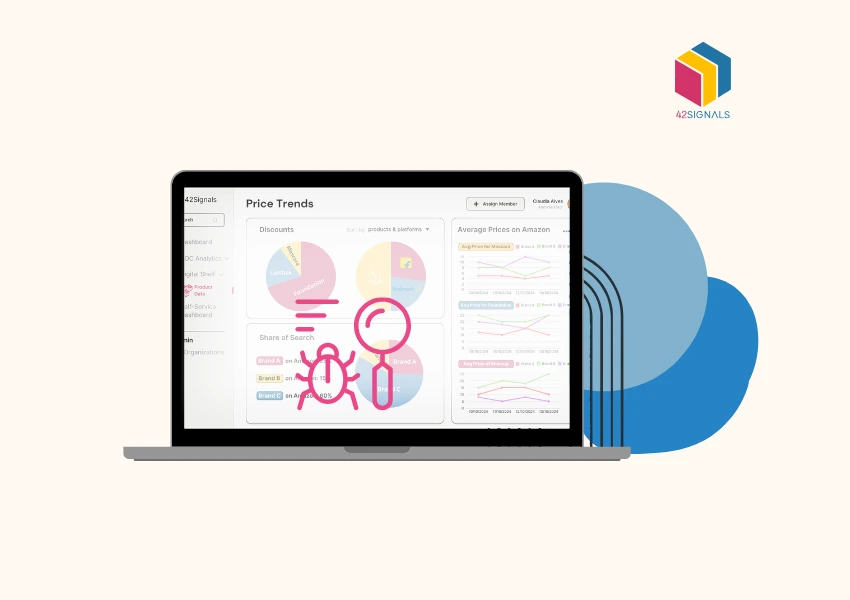Dynamic pricing is a powerful strategy that enables e-commerce businesses to adjust prices in real-time based on market conditions, customer behavior, and other relevant factors. However, it is crucial for businesses to maintain purchase price parity across different channels and platforms to ensure fairness, customer trust, and a level playing field. In this blog, we explore effective strategies for maintaining price parity while embracing a dynamic pricing strategy, allowing businesses to optimize revenue without compromising customer satisfaction.

1. Set Pricing Guidelines
Establish clear pricing guidelines that outline the boundaries for price adjustments across different channels and platforms. This ensures that prices remain within an acceptable range and prevents drastic fluctuations that may confuse or alienate customers. Guidelines should consider factors such as the product’s value, competition, and market dynamics, providing a framework for decision-making.
2. Monitor Competitor Prices
Regularly monitor competitor prices to ensure purchase price parity and avoid pricing discrepancies. Utilize price tracking tools and e-commerce insights platforms to gather real-time data on competitor pricing. By staying informed about market trends and competitor strategies, you can adjust your prices accordingly while maintaining competitive positioning and price consistency.
3. Leverage Automated Pricing Tools
Implement automated pricing tools that integrate with your e-commerce platform. These tools can monitor competitor prices, market demand, and other relevant data to adjust your prices dynamically while adhering to predetermined pricing guidelines. Automated tools help maintain purchase price parity by ensuring that your prices stay competitive without deviating significantly from competitors.
4. Consider Minimum Advertised Price (MAP) Policies
MAP policies establish a minimum price at which products can be advertised or publicly displayed. These policies can help maintain price parity by preventing aggressive price undercutting and ensuring a fair marketplace for all retailers. Enforce MAP policies with your distribution partners and resellers to promote consistency and avoid price wars.
5. Implement Price Monitoring and Enforcement
Invest in robust price monitoring and enforcement mechanisms to detect and address any instances of price deviation. Continuously monitor prices across all channels and platforms to identify discrepancies or unauthorized price adjustments. Take prompt action to rectify any inconsistencies and communicate with relevant stakeholders to ensure adherence to price parity guidelines.
6. Communicate Transparently with Customers
Transparency is key to maintaining customer trust. Clearly communicate your dynamic pricing strategy to customers, emphasizing that price adjustments are based on market dynamics and factors beyond your control. Educate customers about the value they receive through the dynamic pricing strategy, such as competitive pricing, personalized offers, and better deals during off-peak periods.
7. Focus on Value-Added Services
While dynamic pricing is important, it is equally vital to offer value-added services to customers to enhance their overall shopping experience. Focus on exceptional customer service, fast and reliable shipping, flexible return policies, and loyalty programs. By emphasizing these factors, you can differentiate your business from competitors and build customer loyalty beyond pricing considerations.
Maintaining purchase price parity while embracing a dynamic pricing strategy is crucial for e-commerce businesses to foster customer trust, ensure a level playing field, and optimize revenue. By setting clear pricing guidelines, monitoring competitor prices, leveraging automated pricing tools, and enforcing MAP policies, businesses can strike the right balance between dynamic pricing and price consistency. Effective communication with customers and a focus on value-added services further strengthen the customer relationship beyond price considerations. Embracing these strategies allows businesses to navigate the dynamic e-commerce landscape while delivering a seamless and fair pricing experience for customers.







